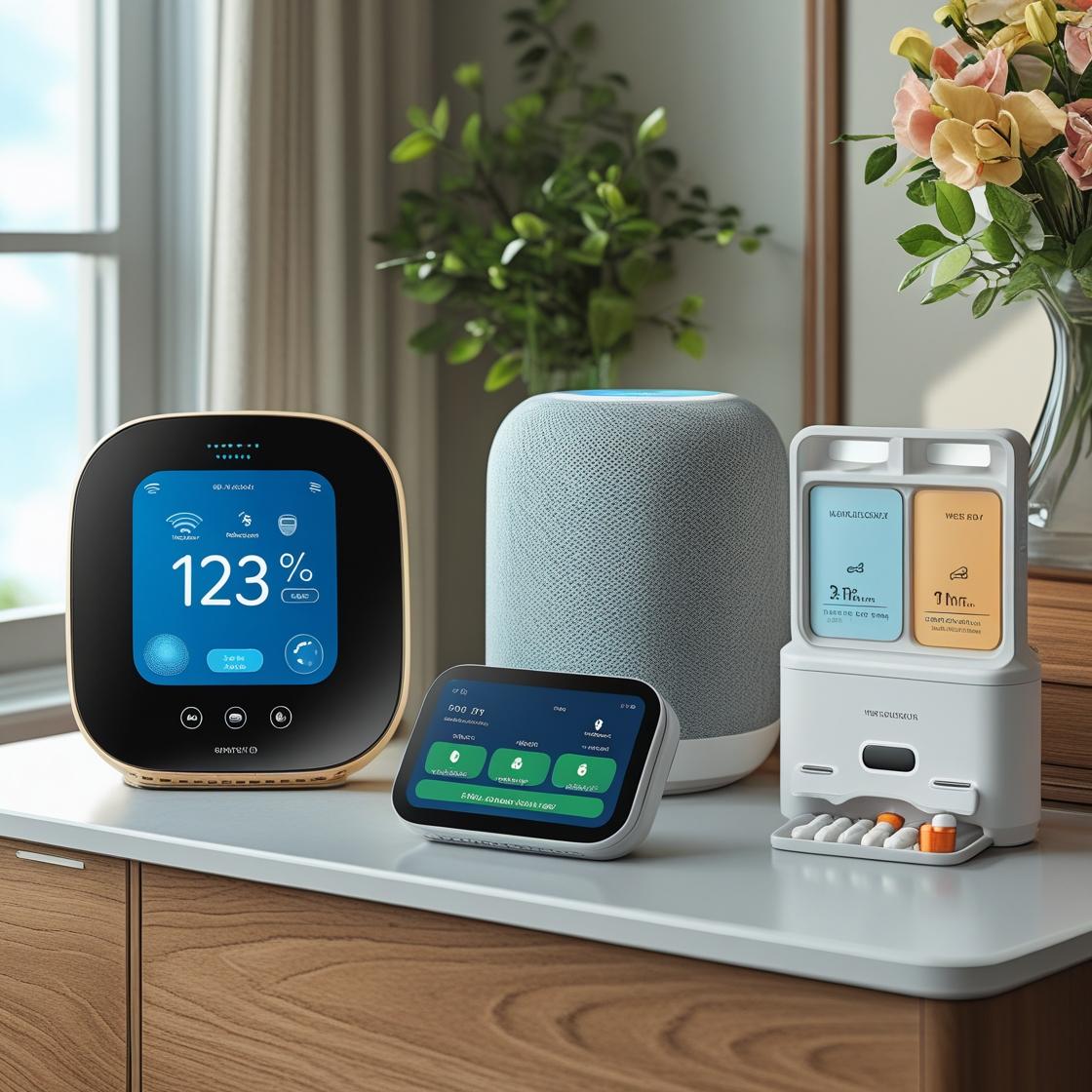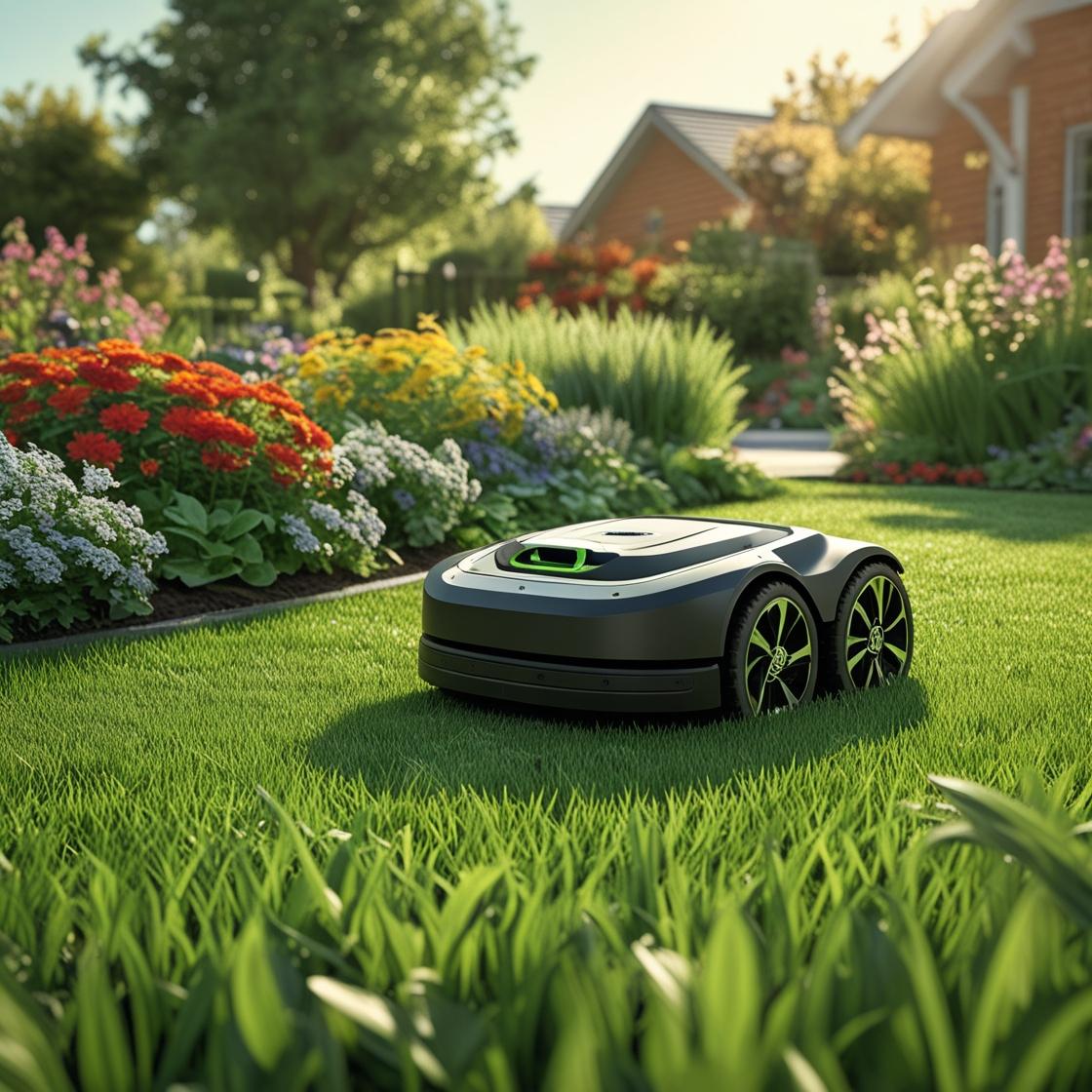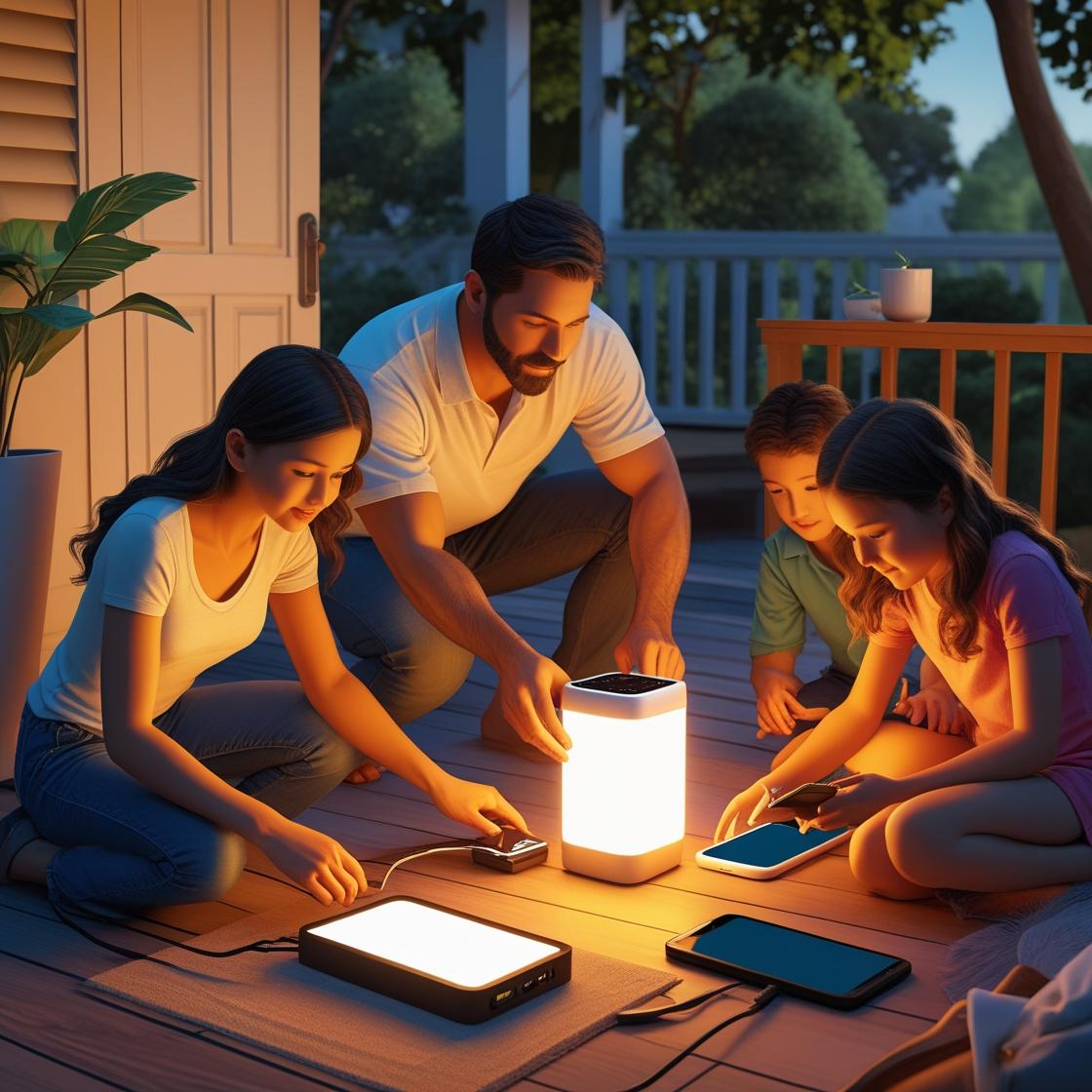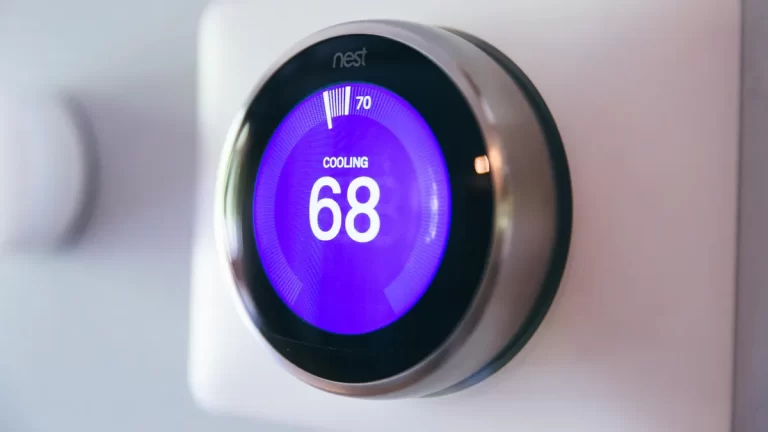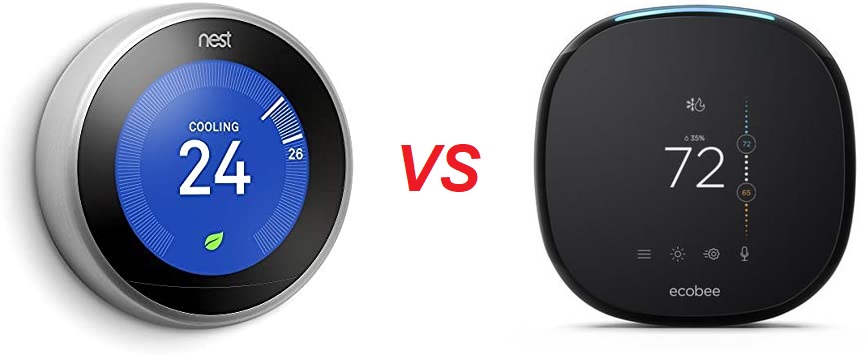
The Nest and ecobee4 are frontrunners in the field of smart thermostats. Let’s unpack some of their features to find the best smart thermostat for you.
The Nest and the ecobee4 are two of the leading smart thermostats on the market today. I’ve used both of them as I recently moved from a Nest-equipped house to one with an ecobee4.
Let’s see how they stack up head-to-head in the battle for the best thermostat title.
Each thermostat has features that might appeal to a particular audience. The Nest integrates with the rest of the Nest suite of home monitoring products seamlessly. The ecobee4 has much more powerful energy reporting.
At a Glance
For me, the ecobee4 is my winner. It has the right blend of features, integration, and monitoring for me. But what sets it apart is its use of remote sensors to adjust the temperature based on occupancy. That’s a game-changer for me.
And with available Alexa speakers and functionality with all three major voice assistants, I see myself using my ecobee4 happily for years to come.
Don’t just take my word for it, though. Let’s make a quick comparison of ten features that will help you figure out the best smart thermostat for you and your home.
Comparison
Let’s take the Nest vs ecobee4 head-to-head!
1.Spying and Snooping
Smart thermostats are attractive to homeowners for a variety of reasons. But they are also appealing to thieves, hackers, and advertisers. Be alert to the potential risks of letting your smart thermostat become a source of your personal information for intruders.
Nest
The Nest privacy policy is transparent and robust. It details that Nest and its subsidiaries and affiliates collect, use, share, and store your data. That data includes personal information.
But their three-part pledge states that they will be transparent about how they collect and use data, their commitment to top-tier security protocols to keep your data safe, and that they will ask your permission for sharing your information with third parties.
Ecobee4
The ecobee privacy policy is similarly robust. It is pretty detailed and lengthy, and I feel that it hides some of the truth in its seventeen-point terms of use. Not only does the ecobee4 require an email address to register your device, you automatically opt-in for receiving alerts, reminders, and updates. You can unsubscribe if you wish.
Ecobee also states that there are situations where your private data may be shared with third parties without your consent, like in the case of law enforcement action.
Which is Best?
It’s hard to say which smart thermostat is the best in terms of securing your data. When buying any smart or connected device, some of your data is likely part of the initial purchase transaction. And your information is then routinely collected going forward.
Both Nest and ecobee pledge to secure your data and use it discerningly, but they are both harvesting it. So, to me, this is a toss-up. There are inherent risks with both products that you can’t avoid.
2.Ergonomics and Style
Part of the appeal of a smart thermostat is that it looks better than the old clunky models we are used to seeing.
Nest
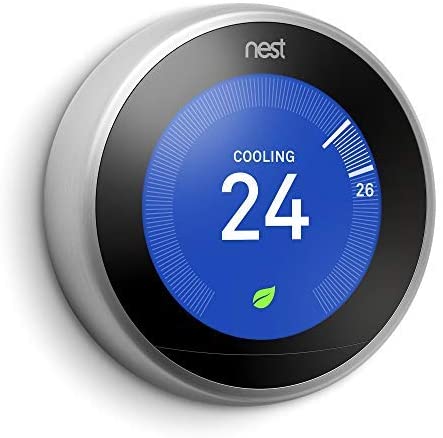
The Nest smart thermostat is offered in two different models that come in a few different colors. The basic nest thermostat has a plastic housing and a mirror display. The higher-end and more expensive Nest Learning Thermostat has a metal ring instead of a plastic housing and also features a high-resolution display that is capable of showing the time, temperature, or weather.
Both models are a huge improvement over the older style round Honeywell thermostats that may be quite familiar to you, but they clearly have drawn some inspiration from the round Honeywell design.
The higher-end model of the Nest looks and feels solid, sleek, and is easily matched to almost any decor.
Ecobee4
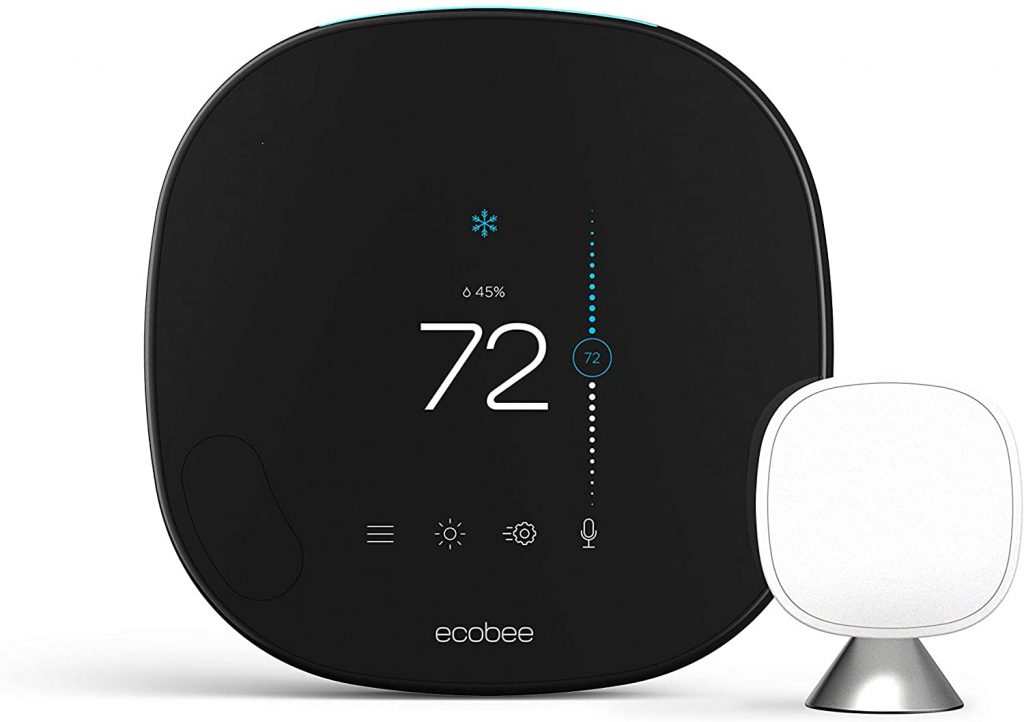
The ecobee designers made a decision to stay a bit more square than the Nest. Instead of a round design, it has a square-ish appearance, with rounded corners that resemble a jumbo-size smartwatch. It is constructed out of durable black plastic and has a large touchscreen that is larger than the Nest’s interface.
Which is Best?
The ecobee4 I currently have looks great on my wall. And, it matches the decor of the rest of my home. But, it doesn’t have the added ‘coolness’ of the Nest I had at my previous home, and it doesn’t feel quite as solidly constructed either. The Nest looks great on the wall, and its display is attractive and stylish.
So, I think that the Nest wins the ergonomics and style battle.
3.Voice Controls
Voice control is an obvious appeal of a smart thermostat. It’s much easier to adjust a thermostat with a voice command, as opposed to opening the app on my phone or actually walking over and adjusting it manually.
My ecobee4 works with Amazon’s Alexa, so it is quite intuitive and easy to interact with. But, I know from previous experience that Google Assistant and Apple’s HomeKit can work just as well.
Nest
Nest supports Amazon Alexa and Google Home. But, unfortunately, it does not support Apple’s HomeKit. And, even worse for some devotees of Apple’s universe, it is unlikely ever to be cross-compatible.
Ecobee4
The engineers at ecobee must really love voice control. The ecobee4 seems made to receive verbal commands, and it supports all three major voice assistants: Amazon Alexa, Google Home, and Apple HomeKit.
Which is Best?
Once you get over the idea of talking to a machine, both smart thermostats offer pretty seamless voice control. But, the ecobee4 has an integrated Alexa speaker built-in. And, since ecobee supports all three of the major voice assistants, and Nest does not, the ecobee4 is the better choice for many users.
4.Setting a Schedule
A big selling point for smart thermostats is that they are an improvement over older, simpler thermostats that simply turn on and off according to a set temperature. With a new, smarter thermostat, you can ostensibly minimize your energy usage by taking advantage of technology.
Nest
Perhaps the biggest marketing angle for the Nest is that it supposedly learns and adapts to your schedule. When you have completed your installation and first power up your new Nest, it follows an algorithm to set an initial schedule and temperature.
Pretty soon, the room is warmer or cooler than you would prefer. You use either the app or the actual thermostat to adjust the temperature setting accordingly. The Nest records each adjustment you make.
After a few days, your Nest will have learned your schedule patterns and the temperature settings that you prefer. Based on your entries, your Nest will continue to make adjustments to the program. The longer you continue to make adjustments, the more the Nest will learn, so the program will continue to evolve and hopefully improve.
You might prefer to set a traditional program for your thermostat’s temperature settings. If you want, you can easily shut the learning feature off and program a conventional schedule.
Ecobee4
The ecobee4 sticks to a more conventional programming method. You set your times and temperatures according to your sleep and when you are at home or away. The program does not adapt on its own.
While the ecobee4 doesn’t learn your habits, it is very easy to set up or adjust the schedule from the thermostat, your desktop, or the ecobee mobile app.
Which is Best?
Well, the Nest offers two types of programming. So in a head-to-head comparison where the ecobee4 is only capable of manual programming, the Nest is the winner.
But, this is also sort of subjective. Some people prefer entirely manual programming, and others see benefits to a thermostat that learns their habits and adjusts temperatures based on patterns.
But, only the Nest thermostat offers both types of programming and the more versatile choice.
5.To Wire or Not to Wire
Unlike older model thermostats with analog or even more rudimentary displays, smart thermostats require a steady source of electrical power. So, depending on the configuration of the wiring in your home, you may need to run additional wires to keep your smart thermostat’s display, and WiFi powered.
The common wire or c-wire often powers a traditional thermostat. But when it’s not present, your options may be limited.
Nest
The Nest thermostat can be installed without a c-wire. That means it is possible you can save yourself from wiring headaches by opting for this model smart thermostat if you don’t have an existing c-wire.
Ecobee4
The ecobee4 cannot be installed without a c-wire’s power. As a workaround, the ecobee4 comes with a Power Extender Kit (PEK) that requires a small bit of wiring at your HVAC panel to circumvent the need for a c-wire.
Which is Best?
Both thermostats use a little bit of electrical sorcery to conjure up the power that they need in the absence of a c-wire. The ecobee4 comes with their PEK and helps you source the power you need without a c-wire.
The Nest takes advantage of a technique called phantom power, or power stealing, to store power from existing circuits utilizing a supercapacitor. That technique is known to cause some problems with other HVAC hardware, and you might want to avoid using it. That means running a c-wire anyway.
The ecobee4 makes you actually do a bit of wiring, but it comes with the wires included. That means in the absence of a c-wire, you have everything you need to correct the issue at hand: winner, ecobee4.
6.Energy Reporting
Most people converting from an older thermostat to a new smart model are doing so to achieve energy savings. Their motivation might be purely financial or part of an effort to be more environmentally friendly. But just like me, they probably want to see the details of their usage.
Nest
Nest records up to ten days of data. It offers a visual representation of the activations of your system and when it shuts off. It also denotes the times that the temperature setting was changed.
You can compare the data and see your usage across different days and times. You will also receive a monthly summary via email with information about your energy usage and how it stacks up against your previous months and the usage of other Nest users.
Ecobee4
Ecobee4 collects and stores your HVAC data for up to eighteen months. Any data available, including temperature, motion, and remote sensor information, is stored. Ecobee thermostats come with free access to a software tool, Home IQ. This tool allows you to analyze your energy usage via a web interface.
Home IQ helps you monitor your usage with features like system monitoring, weather impacts, and home efficiency. Putting all the data at your fingertips allows you to understand your total energy usage, how the local weather impacts your demands, and how your home’s efficiency compares to that of others.
Which is Best?
Nest has taken some strides to close the gap in energy reporting. But, the ecobee4 and Home IQ are the clear frontrunners for now. All of your actions are recorded. Changes in the temperature setting, sensor data, and all events are logged on a minute-by-minute basis for future analysis. And with Home IQ, it’s done seamlessly and presented intuitively.
7.Is There a Cheaper Model Available?
No one is looking to break the bank with a smart thermostat. It’s likely that you’re checking them out because you want to save some money on your energy bill. Spending a big sum on a new thermostat to replace the existing and operational one on your wall doesn’t always make sense.
That’s probably the reason why there is a lower-cost version of both the Nest and ecobee available.
Nest
The Nest is available in a lower-priced version called the Nest Thermostat E. The biggest difference between it and the top Nest model comes down to its lack of an accessory port for adding sensors. Less functional but still important, the Nest E has a much more subdued appearance. The shiny metal ring of the housing is replaced with plastic, and the screen has a flat finish that is quite a bit more subtle than the top model.
Ecobee4
The ecobee4 is the flagship ecobee model. The ecobee3 Lite looks and functions almost identically to the premium ecobee4 version. But, it lacks a built-in Alexa speaker, does not feature an accessory terminal, and doesn’t come with a remote sensor like the ecobee4.
Which is Best?
These scaled-down smart thermostats both lack an accessory terminal. So that means they can’t interact with other accessory appliances in your home.
Outside of that limitation, they function just like their more expensive counterparts. If your prime motivation is to save money, and you don’t want to hook up to an accessory, these less expensive models can be pretty appealing.
But, the Nest Thermostat E is such a departure from the sleek styling of the Nest, you might want to spend the extra money to get the better-looking version. That’s what I did, and when I purchased a whole-home humidifier, I was happy to have access to an accessory terminal for integration.
For cost-savings that don’t tremendously impact looks for the worse, the ecobee gets my vote in this feature comparison.
8.Geofencing
If you’re familiar with the idea of geofencing, forgive me for offering a brief explanation to the less nerdy readers! Your smartphone’s GPS is capable of interacting with smart home software to understand when you are home. That process is called geofencing.
When you cross the fence and exit your home, a smart thermostat can switch into away mode. When you return home and cross back over the fence, the thermostat goes into active mode.
Nest
Nest’s app has geofencing integrated into its software. Multiple users with the app installed on their phones can be tracked easily. Kid #1 just got home from school? Active mode. They left home for sports practice? Away mode is triggered. When you and kid #2 get home a couple of hours later, the thermostat goes back into home mode.
Where Nest’s platform really goes to the next level is through its integration with other Nest devices. Let’s suppose you also have other Nest products with integrated motion sensors. You just left the house with your cell phone. Away mode will not be triggered by the geofence because the other remaining occupants of your home still set off the motion sensors regardless of whether they have a phone or are using the Nest App.
Ecobee4
In its native app, ecobee4 geofencing can only support one phone user. If the primary user with the geofence functionality on their phone comes and goes, other occupants might begin to hate the geofencing trigger.
You and your phone leave the house early for work, your ecobee reacts and goes into away mode, and your wife wakes up to a chilly house in the middle of winter. Don’t ask me how I know all about this unfortunate scenario.
After my wife let me back in the house, I discovered a workaround that allows you to use multiple phones for geofencing with the ecobee4. But, that process involves installing third-party apps. It’s not exactly difficult to do, but it is highly annoying that this functionality isn’t part of the native ecobee app.
Which is Best?
Nest blows ecobee4 out of the water here. The idea that I’m building a Frankenstein monster to cobble together a solution that enables multiple phones with geofencing functionality is very frustrating. Even when that little project was complete, I still can’t enjoy the full integration I had when I still had a Nest.
Since I rely on geofencing to control the temperature in my home and to save money, I prefer the Nest for this reason.
9.Remote Sensors
Remote sensors allow the thermostat to take temperature readings from any room throughout your home, and based on that data, your thermostat can adjust itself accordingly.
Let’s say it’s hot in your home office when the sun is on its windows in the late afternoon. But, your thermostat is on the shadier side of the house. Instead of sweating at your desk, add a temperature sensor in your office, and the thermostat will adjust when that room grows too hot.
Nest
Nest recently debuted a line of temperature sensing sensors. They integrate with your thermostat and bring an additional layer of fine-tuning capability to your home’s heating and cooling. But, notice I only said temperature sensing. Nest sensors are not capable of sensing motion or occupancy. You can also read about the nest airwave that will save you money on your energy bill.
Ecobee4
Ecobee4’s remote sensors are capable of sending temperature and motion data back to the ecobee4 smart thermostat. This allows the thermostat to further adjust itself best on what rooms are being used and the temperatures that you prefer.
The ecobee4 is typically sold with one remote sensor included. Additional sensors can be purchased separately.
Which is Best?
Nest is lagging behind in the remote sensor battle. Its lack of motion detection and feedback is a major detriment: advantage, ecobee4.
10.Customer Service
When something goes wrong with a smart thermostat, or any other home product, it’s nice to know that you can access a friendly customer service agent for help.
Nest
Google supports Nest with a customer service number that operates from 5 AM to 9 PM PST. They also have an intuitive contact us landing page for submitting questions to their team. This portal will also attempt to help you solve your problem via recommendations based on the information you input.
Ecobee4
Ecobee follows Amazon’s familiar approach of exhausting every possible means of providing online help and troubleshooting before you can interact with a human, even via email or tech support.
Their support landing page is packed with helpful tips and links for all their thermostat models. But, until you work through their automated funnel for solving problems on your own, you won’t even have the illusion of a human’s help.
Which is Best?
Nest is the front runner for me here. I am tired of Amazon’s standard operating procedure. Now, to be fair, that might just be because I do a fair amount of shopping via Amazon, so I am more familiar with their practices.
But it still annoys me, so Nest wins here.
Nest vs Ecobee4: The Winner

Ok, time for some trumpets and fanfare. Allow me to announce the winner of our competition, the ecobee4! The ecobee4 is our winner because of its class-leading customization capabilities, as well as its ability to track and analyze data for a comparatively huge period of time.
Combined with its easy voice controls, included remote sensor with occupancy detection, and its intuitive user-friendly display, the ecobee4 is my favorite.
Google fans may prefer the Nest model simply because it’s more familiar. Plus, its integration with other Nest devices and flashy, sleek design will also appeal to anyone who prefers that sort of design.
Alexa and Amazon fans will likely enjoy the ecobee models more because they again seem more familiar. But, the advanced monitoring capabilities, seamless voice commands, and integration with Alexa speakers will likely set ecobee4 on top of the pyramid.


